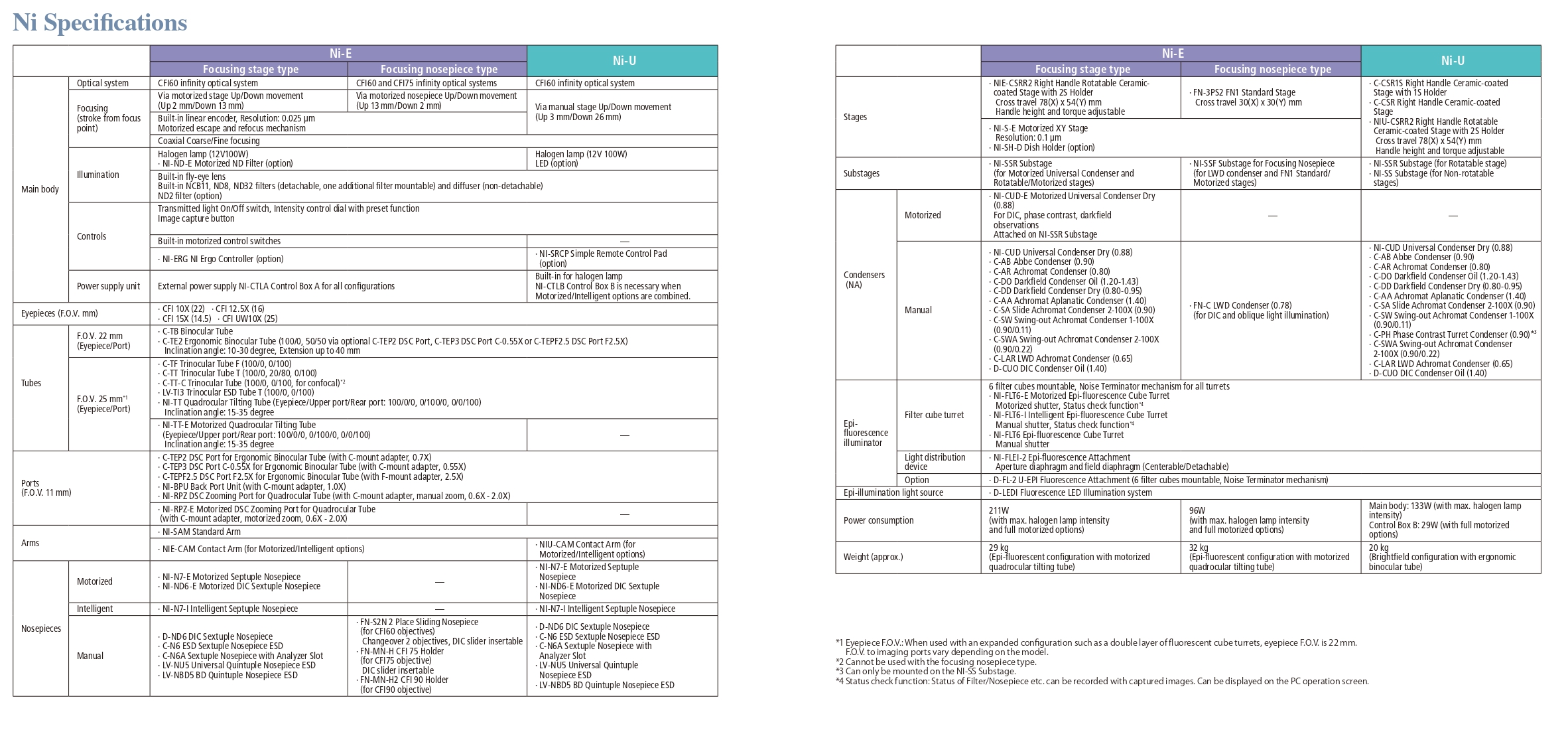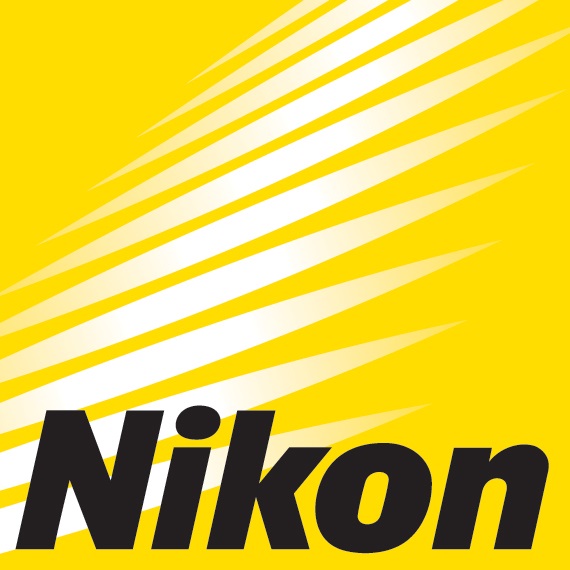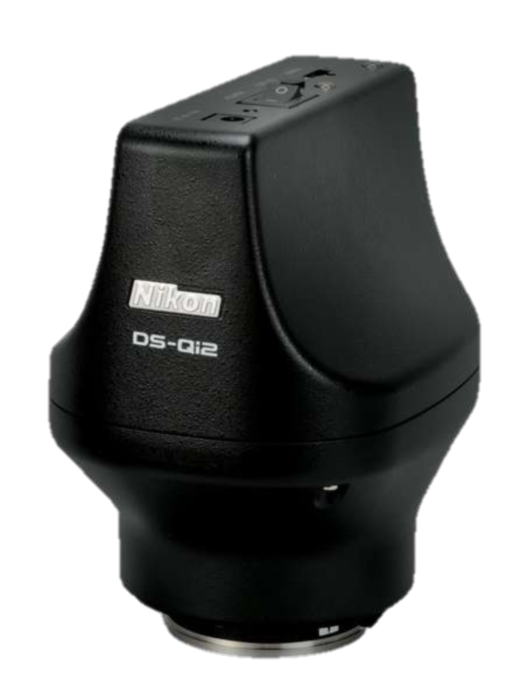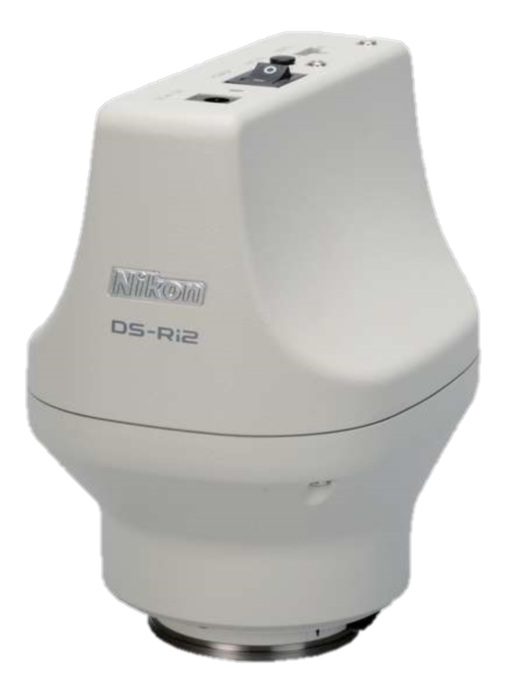전동 포커싱이 탑재된 전자동 모델
Eclipse Ni-E는 니콘의 최상위 전동식 정립 현미경으로, 연구 분야의 고도화 및 자동화 요구에 맞춰 개발되었습니다.
Eclipse Ni-E는 유연한 시스템 확장성을 자랑하며, 광범위한 첨단 연구 애플리케이션을 지원합니다.
니콘의 독자적인 스트래텀(stratum) 구조, 교환 가능한 초점 조절 메커니즘(초점 조절 스테이지부터 초점 조절 노즈피스까지), 다양한 전동 액세서리, 그리고 자동으로 변화하는 관찰 조건을 통해 Ni-E는 적용 가능성을 확장하여 모든 첨단 생명 과학 및 의료 연구를 위한 완벽한 솔루션을 제공합니다.
● 전동 포커싱
● 다양한 전동 액세서리 사용 가능
● 공초점 시스템 장착 가능
● 두 가지 포커싱 메커니즘 옵션: 포커싱 스테이지 및 포커싱 노즈피스
● 선진 연구에 이상적
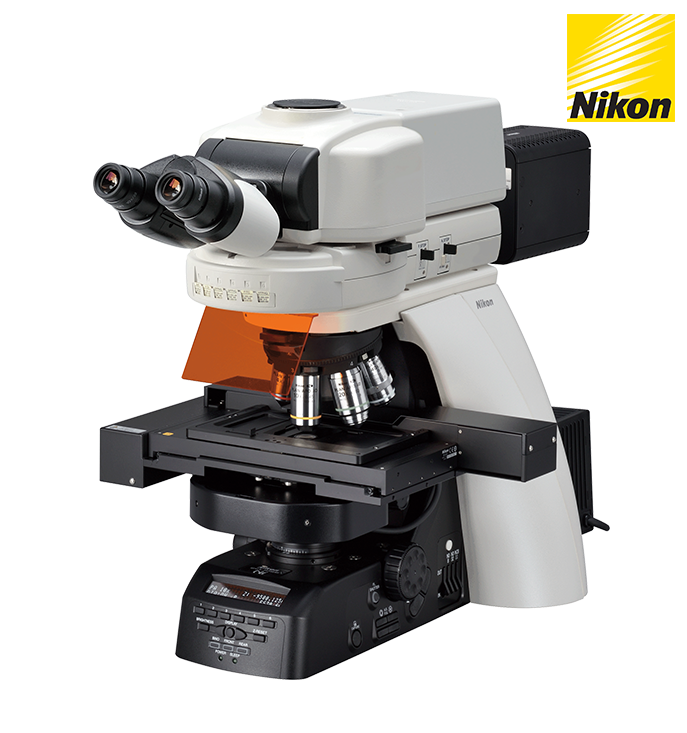
주요 특징들
다양한 요구 사항을 충족하는 유연한 시스템 확장성
여러 개의 광학 경로를 탑재할 수 있는 층 구조
니콘에서 독자 개발한 층 구조를 통해 하나의 현미경에 두 개의 광학 경로를 동시에 장착하여 다양한 용도를 지원할 수 있습니다.
이 구조는 여기 필터 큐브 터렛과 배리어 필터 큐브 터렛을 수직으로 부착하고 개별적으로 제어할 수 있어 다양한 애플리케이션을 지원할 수 있습니다.
전동 반사 형광 조명기, 전동 콘덴서, 전동 4안 틸팅 튜브로 구성된 Ni-E(포커싱 스테이지)
용도에 맞게 포커싱 메커니즘을 수정할 수 있습니다.
Ni-E의 포커싱 메커니즘은 포커싱 스테이지 타입과 포커싱 노즈피스 타입 중에서 선택할 수 있습니다. 포커싱 노즈피스 타입은 고정 스테이지 실험 시스템을 지원하고 생체 내 이미징 요구 사항을 충족합니다
-
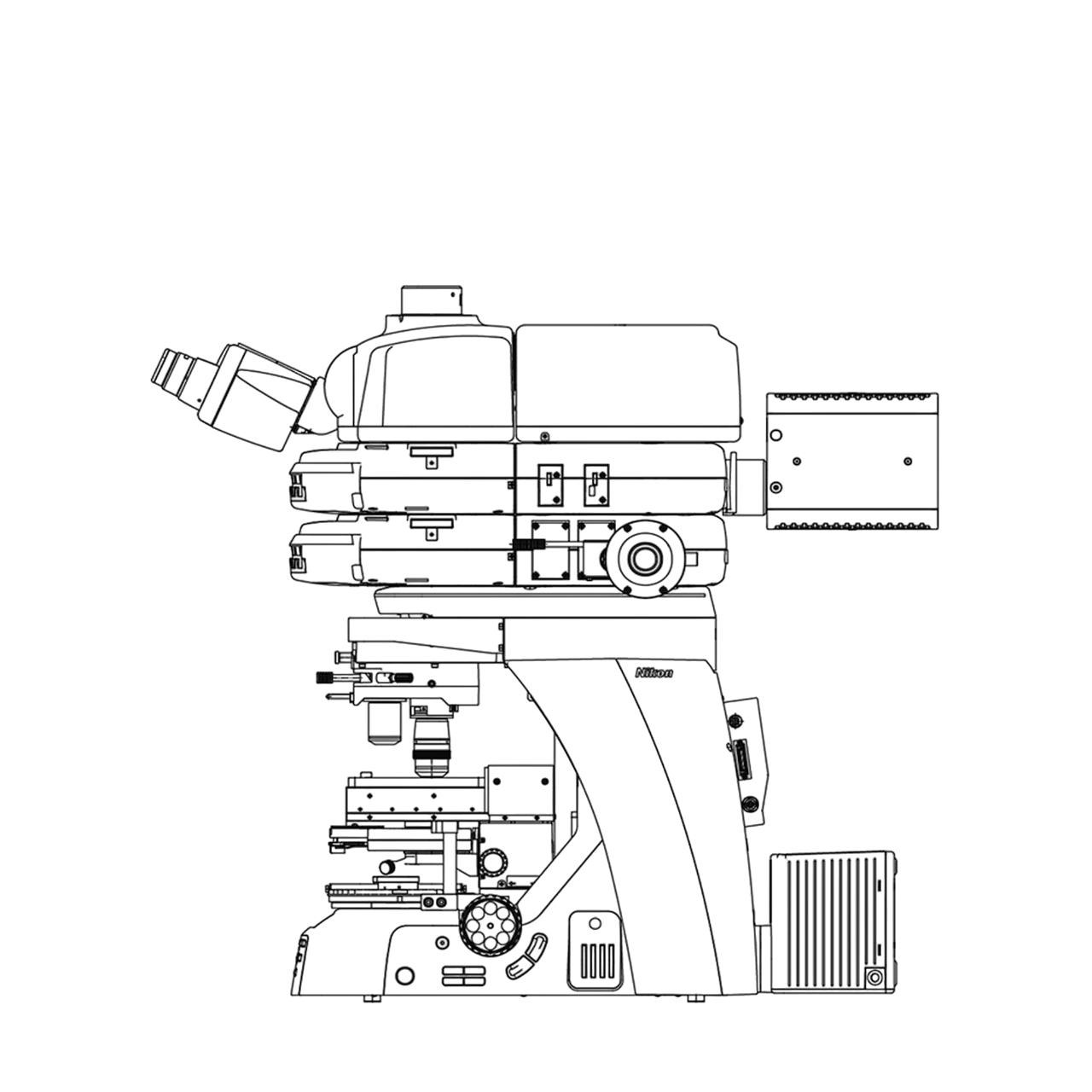
포커싱 노즈피스 타입
-
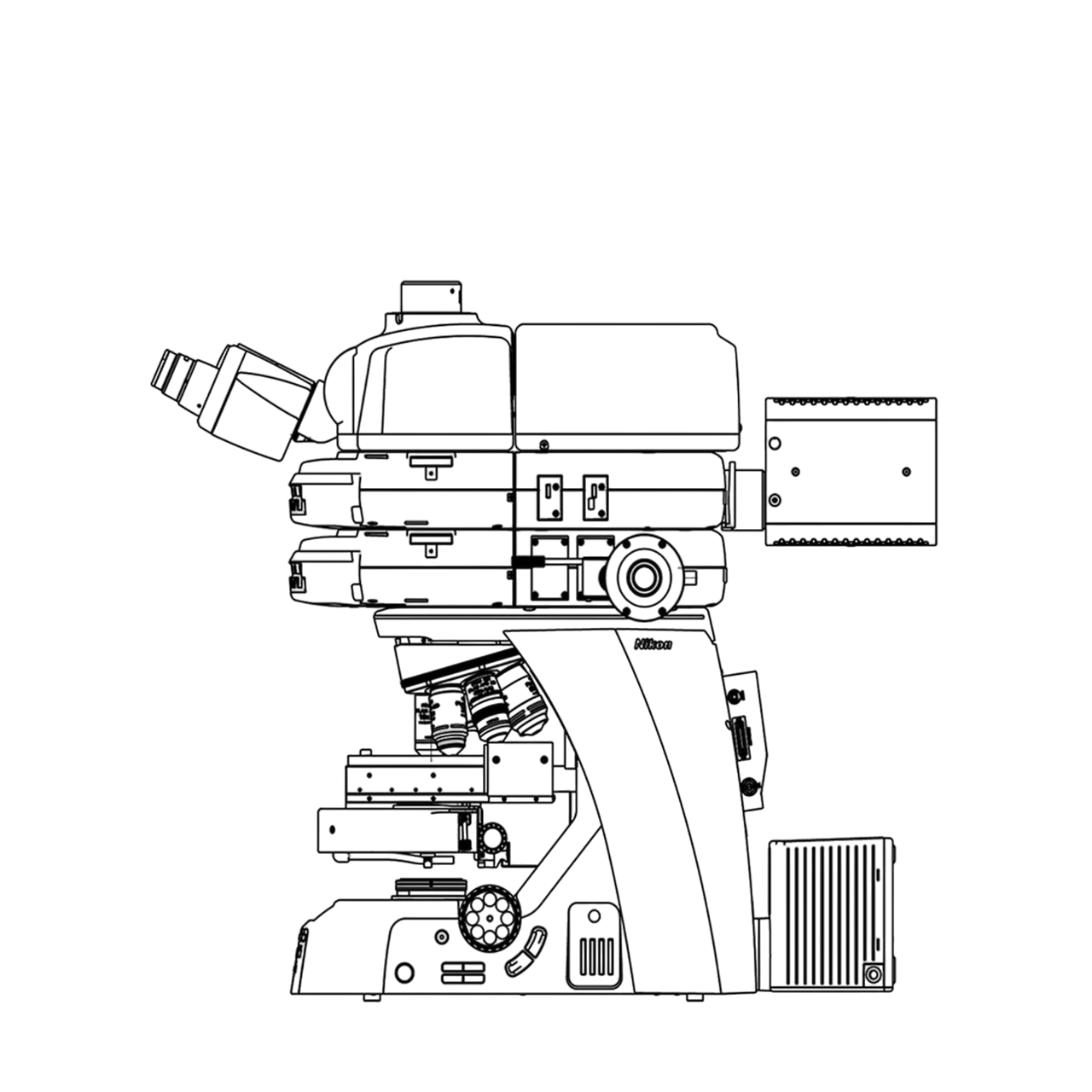
포커싱 스테이지 타입
고속 전동 액세서리
전자동 모델 Ni-E는 용도에 따라 전동 XY 스테이지, 전동 DSC 줌 포트 등과 같은 다양한 전동 액세서리와 맞춤형으로 조합할 수 있습니다. 또한 수동 모델 Ni-L/Ni-U에 전동 노즈피스, 전동 반사 형광 큐브 터렛, 전동 셔터와 같은 전동 액세서리를 장착할 수 있습니다.

전동 XY 스테이지(Ni-E) 전동 DSC 줌 포트(Ni-E) 전동 반사 형광 큐브 터렛(Ni- E, Ni-L, Ni-U) 전동 DIC 6중 노즈피스(Ni- E, Ni-L, Ni-U)
다양한 관찰 방법 지원
Ni 시리즈 액세서리는 기능별로 세분화되어 있어, 필요한 유닛을 선택하고 유연하게 결합하여 간결하고 효과적인 시스템 구성을 만들 수 있습니다.
공초점 이미징
Ni-E 의 고정밀 Z-포커스 메커니즘과 니콘의 공초점 현미경 시스템을 결합하면 장기와 세포의 3D 구조를 고해상도, 고 S/N 비율로 이미징할 수 있습니다. Ni-E는 공초점 스캐너를 장착하기에 적합한 매우 안정적인 구조를 가지고 있으며 밝은 공초점 이미징을 가능하게 하는 넓은 광속을 특징으로 합니다.
-

Ni-E 포커싱 스테이지 타입으로 구성
-
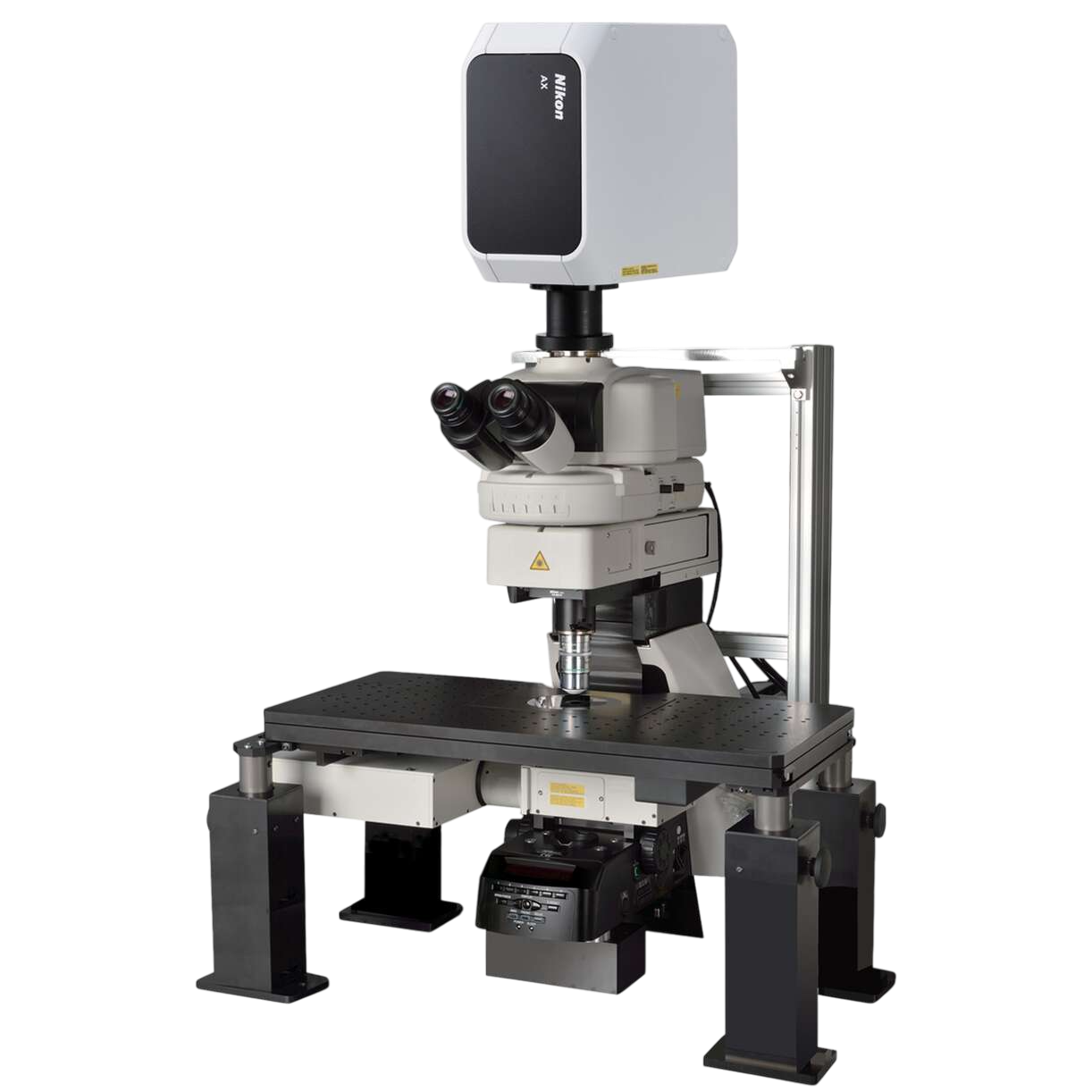
Ni-E 포커싱 노즈피스 타입으로 구성
동시 멀티 채널 이미징
Ni의 유연한 계층 구조는 후면 카메라 포트 유닛과 반사 형광 부가장치를 동시에 장착할 수 있도록 하여, 각 카메라에서 서로 다른 두 파장의 이미지를 동시에 획득할 수 있습니다. 이를 통해 CCD칩을 분할하지 않고 각 파장에 대해 전체 프레임에서 고해상도 이미지를 캡처할 수 있습니다. 수집에 개별 카메라를 사용하여 사용자가 각 채널에 대한 수집 매개변수를 독립적으로 맞춤화할 수 있어 고감도 FRET 이미지를 획득할 수 있습니다.
* 호환되는 카메라에 대한 정보는 엔아이텍에 문의하십시오.
전동 반사 형광 조명기, 전동 콘덴서, 전동 4안 틸팅 튜브로 구성된 Ni-E(포커싱 스테이지)
형광 라벨링된 표본 이미징
전동 노즈피스와 전동 반사 형광 큐브 터렛으로 조합된 각 유닛은 노출 시간, 카메라 Gain, 시간 간격 등의 카메라 설정에 따라 자동으로 제어되어 신속하고 효율적인 이미지 획득이 가능합니다.
표본의 광표색을 줄이는 데 도움이 되는 전동 반사 형광 큐브 터렛 셔터는 편리한 Ni-L/Ni-U 원격 제어 패드로 쉽게 작동합니다.
Ni-L 조합
병리학적 표본의 자동화된 이미징
Ni-E를 사용하면 대물렌즈 전환을 통해 최적의 밝기를 자동으로 조정할 수 있어 수동으로 조정할 필요가 없습니다.
4안 튜브용 전동 DSC 줌 포트의 광학 줌을 제어하여 이미지 품질을 유지하면서 원하는 화각으로 이미지를 캡처할 수 있습니다.
Ni-E 조합
전자동 현미경 제어를 제공하는 Ni-E
관찰과 연관된 현미경 작동은 이전에 설정한 대로 자동으로 제어할 수 있습니다. Ni-E는 광활성화 장치, 공초점 시스템과 같은 다양한 장치에 대한 종합적인 제어가 필요한 실험에 효율적인 전자동 모델입니다.
대물렌즈 전환 시 자동 조정
콘덴서, 애퍼쳐, 필드 다이어프램 및 ND 필터는 대물렌즈 전환 중에 최적의 위치로 자동 설정됩니다. 또한, 핸들 회전당 스테이지 XYZ 이동량 및 동초점 거리 편차 보정이 자동으로 조정됩니다.
Ni-E
관찰 조건 재현
선택한 관찰 조건을 개별 버튼에 저장하여, 버튼을 눌러 변경할 수 있습니다. 이 기능은 특정 관찰 조건을 재현할 때 특히 편리합니다.
Ni-E
고정밀 전동 포커싱 Ni-E
고정밀 Z-초점은 공초점 레이저 현미경과 함께 사용하는 데 필요한 정확한 Z-위치 정보를 제공하고 자동화된 Z-시리즈 획득을 지원합니다. 개별 조동 및 미동 포커스 노브는 조작의 용이성을 향상시킵니다.
Ni-E
높은 광학 성능
나노 크리스털 코팅 기술
현미경 대물렌즈에 최초로 사용된 이 반사 방지 코팅은 나노미터 크기의 입자로 구성되어 있습니다. 반도체 제조 기술을 기반으로 하며 니콘 카메라 렌즈에도 사용됩니다. 코팅의 거친 구조와 해면 구조의 균일한 입자 배열로 인해 반사율이 매우 낮습니다.

CFI Plan Apochromat Lambda D 시리즈
오일 이멀젼 대물렌즈에 사용되는 고굴절률 유리는 25mm의 대형 대각선 FOV의 주변까지 균일한 밝기와 높은 이미지 품질을 제공하여, 이음새 없는 스티치 이미지를 효율적으로 획득할 수 있으며 대형 샘플의 매크로 이미징을 지원합니다.
405nm~850nm의 넓은 파장 범위에서의 높은 투과율과 색수차 보정으로 핵 염색의 강도 분석에 대해 신뢰할 수 있는 정량 데이터 수집을 할 수 있습니다.
NA가 높은 렌즈는 형광 및 공초점 관찰뿐만 아니라 명시야 및 DIC 관찰에도 이상적입니다.

Water dipping 대물렌즈
작동 거리가 길고 NA가 높은 CFI Apochromat NIR 40X W/60X W objectives 대물렌즈는 근적외선 파장 범위에서 뛰어난 투과율을 제공합니다. 근적외선 범위까지 축상 색수차를 보정하여, IR-DIC 관찰 시 두꺼운 샘플의 미세한 구조를 고해상도 이미지로 촬영할 수 있습니다.
높은 NA(1.10)와 긴 작동 거리(25XCW에서 2.00mm, 100XCW에서 2.50mm)를 특징으로 하는 CFI75 Apochromat 25XC W and CFI Plan Achromat100XC W 대물렌즈는 IR 범위에서 색수차 보정됩니다. 이러한 대물렌즈는 다양한 온도 및 관찰 지점의 깊이에서 발생하는 구면 수차의 변화를 보정하는 메커니즘을 채택하여 두꺼운 샘플의 깊은 영역에 대해 선명한 이미지를 캡처할 수 있습니다.

균일하게 밝은 조명
내장형 “플라이아이” 렌즈는 모든 배율에서 한쪽 끝에서 반대쪽 끝까지 시야의 균일하고 밝은 조명을 보장합니다.
형광 노이즈 제거
니콘 고유의 노이즈 터미네이터 메커니즘은 반사 형광 큐브 튜렛 및 필터 큐브에 사용됩니다.
필터 큐브에서 미광을 완전히 제거하여 S/N비가 획기적으로 향상되어 약한 형광 신호의 이미지를 높은 대비와 밝기로 캡처할 수 있습니다.
고연색형 LED 광원
Ni-L에 내장된 고연색형 LED 광원은 할로겐 광원에 필적하는 자연스러운 색조 재현성뿐 아니라, 광 균일성, 긴 수명 및 기타 LED 관련 장점을 제공하여 병리학적 표본 관찰에 효과적입니다.
조작 용이성
인체공학적 튜브와 스테이지 핸들 높이 조정 메커니즘을 통해 편안한 시청 위치가 가능합니다. 공간 절약형 현미경 베이스를 통해 사용자는 작업 영역을 최대화할 수 있습니다. 전동 액세서리를 쉽게 조작할 수 있는 간단한 리모컨 패드도 제공됩니다.
간단한 디지털 이미징
현미경 베이스에 있는 이미지 캡처 버튼을 누르기만 하면 이미지를 획득할 수 있습니다.
Image capture button
3D 인체공학적 디자인
대부분의 현미경 컨트롤은 Ni-E 전면에 있는 사람의 손이 쉽게 닿는 버튼으로 작동할 수 있습니다. 현미경 측면의 조작 버튼은 관찰 중에 직관적인 터치식 조작이 가능하도록 각이 져 있습니다. 현미경에는 현재 현미경 설정을 쉽게 확인할 수 있는 상태 디스플레이가 있습니다.
원격 컨트롤러
Ni-L/Ni-U용의 간단한 리모컨 패드로 전동 액세서리를 쉽게 제어할 수 있습니다. 실제 현미경과 유사한 조작감의 에르고 컨트롤러도 Ni-E에 사용할 수 있어 직관적인 조작이 가능합니다.
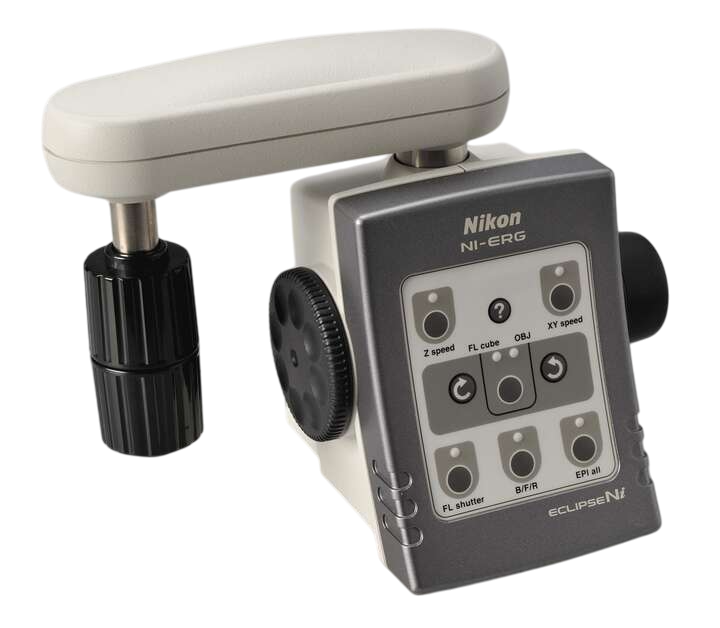
에르고 컨트롤러(Ni-E)
스펙
